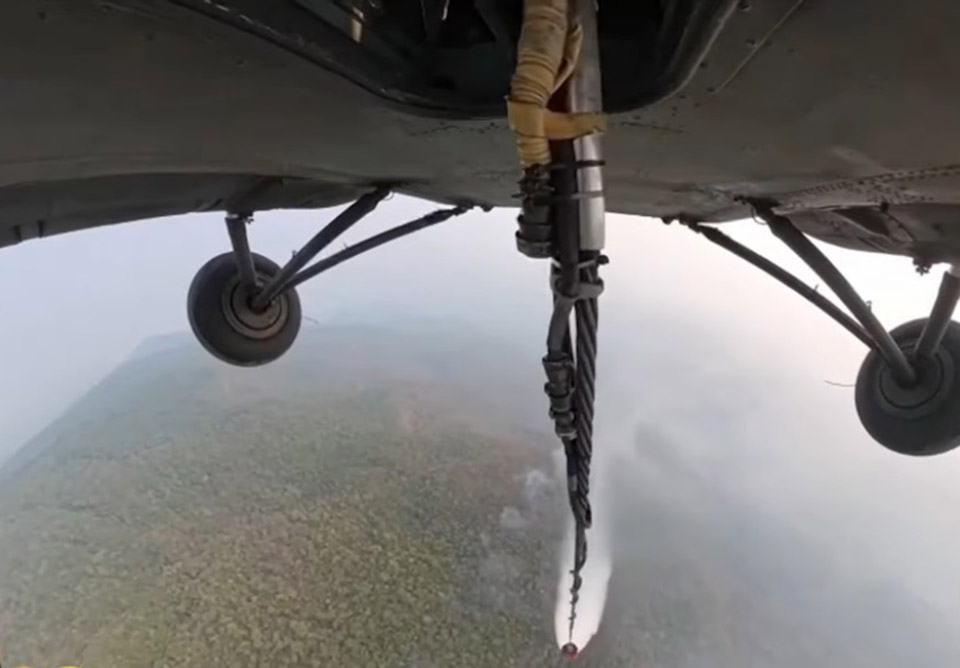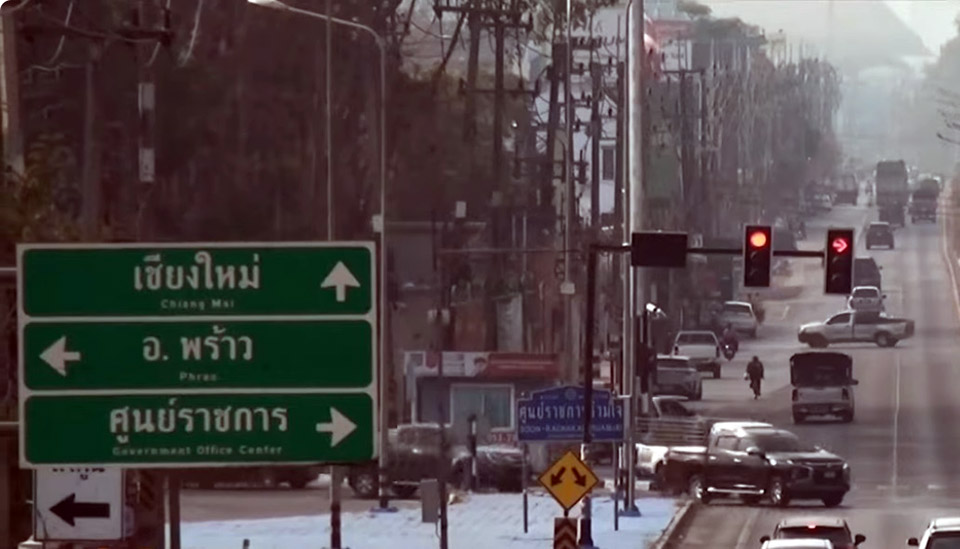
CHIANG MAI, Thailand –– Northern Thailand is experiencing severe air pollution from wildfires, with PM 2.5 levels reaching alarming highs in the morning (March 30). Locals in Chiang Mai can visibly see the smoke in the air. Authorities are working swiftly to contain the fires, deploying helicopters for firefighting operations.
The smoke has heavily covered the forests, making it nearly impossible to see the ground. Two helicopters have been deployed for firefighting: the first, an MI-17 helicopter from the Army, was used to collect water from the Wang Lung Mai reservoir in the Hod district and drop it onto the forest fire in the Tien Tok area, within the Ob Luang National Park. In total, 10,500 liters of water were dropped over three flights.
The second helicopter, a KA32 from the Department of Disaster Prevention and Mitigation, was used to fight fires in the Hoi Pa Lao area, Doi Bae Jao Forest, and the Huai Chang Rong stream within the Omkoi Wildlife Sanctuary, in the Doi Tao district. This helicopter made two flights, using 6,000 liters of water. The operation successfully controlled the fires in both areas.
In Chiang Mai province, there are currently 127 active fire spots across 13 districts, with the highest concentration in the Hod district, which has 29 fire sites. In the city itself, dense smoke blankets the area, reducing visibility and causing eye irritation and respiratory discomfort for the public.
The Chiang Mai Climate Change Information Center reported alarming air quality levels, with PM 2.5 concentrations reaching 491 micrograms per cubic meter at Mae Pang in the Chao district, 485 micrograms at Pang Ma Yao in Chiang Dao, and 130 micrograms near the Night Bazaar. According to IQAir, Chiang Mai ranks as the second worst city in the world for air quality this morning.












